Consignment shop specializes in high-end fashion
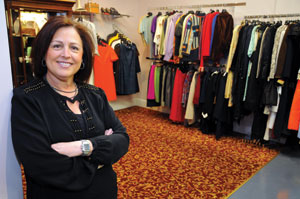 When it’s fashion week in New York, it’s also fashion week at Her Majesty’s Closet, a couture consignment shop for women owned and operated by Barb Bloch.
When it’s fashion week in New York, it’s also fashion week at Her Majesty’s Closet, a couture consignment shop for women owned and operated by Barb Bloch.
Fashion Week kicks off Feb. 9 in both places. Her Majesty’s Closet will celebrate that night with a fashion show beginning at 6 p.m. featuring spring clothing and accessories. It will take place in the brand new space the store moved into last month, directly next door to its original shop on the south side of 83rd Street in Corinth Square near First Watch.
Bloch explained the Prairie Village shop was inspired by pop-up designer shops and boutiques popular on both coasts. Her Majesty’s Closet specializes in designer labels. More than 40 famous names can be found there including Bill Blass, Geoffrey Beene, Nina Ricci, Paulene Triggere, Yves Saint Laurent, Chanel, Prada, Minolo Blahnik, Gucci and Louboutin.
“You will only find designer labels here and it’s all real,” Bloch said. “You will find all the high-end brands and we have a lot of vintage also. We’ve got anywhere from the ‘40s to current styles. We also stock some vintage jewelry and handbags.”
Bloch said Her Majesty’s Closet is very well known for its shoes, furs, handbags and cocktail wear, all of which are “in excellent condition.” The store is also known for its large St. John knits department. The store carries a variety of sizes as well as price ranges.
“I’ve got Chanel jackets that would cost $4,000 or $5,000 new and we have them for $950. It’s not cheap, but for someone who wants Chanel and wants the look, it’s affordable because it’s a fraction of the regular price,” Bloch said.
The store gets its merchandise from estates as well as individuals.
“Often these women buy something and are on the fashion cycle so once they wear it they don’t want to wear it again,” Bloch said.
Her Majesty’s Closet is not the first store of its kind in the area. But Bloch believes what sets this store apart from others is that others don’t carry the quantity of couture available at Her Majesty’s Closet.
“A lot of consignment stores will tell you they have a particular label just to lure you in the store. Then they don’t have it or they just have one piece,” she explained. “We have lots of Oscar de la Renta, lots of Chanel, lots of Armani Black Label, lots of Geoffrey Beene …,” she continued.
Who shops at Her Majesty’s Closet? Bloch said they are people who appreciate couture as well as quality fabrics, construction and design. Customers come in all sizes and ages, from young women to senior citizens.
“Some appreciate fashion but can’t afford these pieces new,” she said. “We also have people who love vintage and who buy into the recycling.”
While she’s only owned Her Majesty’s Closet for two and a half years, Bloch said she grew up in the garment industry. Her family manufactured ladies coats and suits. Professionally she worked as a recruiter for the Carlisle Collection, a clothing line sold by personal consultants, where she learned all about wardrobe building.
Bloch has also served two terms as regional director for the Fashion Group here in Kansas City. In addition she collaborated with Sybil Kahn on a book about the history of the garment industry.
Next week’s fashion show — which got its start when the store first opened as a way to attract customers — will feature 11 models, all customers, showing almost 80 different outfits.
“Every outfit, shoes, jewelry, handbag, coat … worn on that runway is put together with pieces that have come in on consignment and are new in the store for spring,” Bloch explained.
The show is free; reservations are not required but are recommended. The evening also features music, wine and appetizers. The store will be open for shopping as well.
“It’s really a fun, fun evening,” she said. “It’s grown from the 75 people who attended the first show to more than 100 that came in the fall. I’m hoping for about 150 people this time, and it will be recorded and placed on the website,” Bloch said.
Her Majesty’s website has grown along with the actual store. Now customers can purchase clothes directly from the website.
Bloch loves the consignment couture concept and often wears clothes from the store. So do her employees.
“Almost everybody who works here was a customer before they started working here,” she said. “I think we are a very warm and friendly environment and we’re not high pressure. I think we give our customers a great shopping experience.”
Her Majesty’s Closet
The couture consignment shop is located at 4107 W. 83rd St., Prairie Village, Kan. Store hours are Monday through Friday: 10 a.m. to 5 p.m.; Saturday and Sunday: 9 a.m. to 4 p.m. For more information call 913-341-7774 or visit www. hermajestysclosetldt.com.



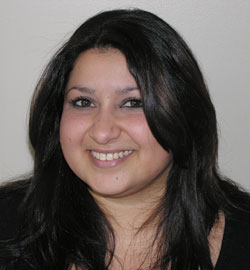 The Jewish Federation of Greater Kansas City’s Israel shlichah (emissary) has returned to Israel. Lilach Nissim, who arrived here in October of 2010, is experiencing health problems that prompted her decision to return to Israel. There she will continue to seek further medical treatment while having the support of her family nearby. A Jewish Federation emissary typically stays in the community for two years.
The Jewish Federation of Greater Kansas City’s Israel shlichah (emissary) has returned to Israel. Lilach Nissim, who arrived here in October of 2010, is experiencing health problems that prompted her decision to return to Israel. There she will continue to seek further medical treatment while having the support of her family nearby. A Jewish Federation emissary typically stays in the community for two years.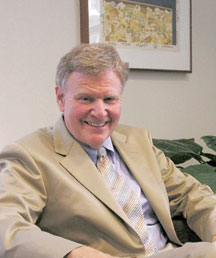 More than 20 years ago, Barry Shrage, president of Boston’s CJP (Combined Jewish Philanthropies — its Jewish federation) was one of the first to recognize the benefits of sending high school graduates and young adults to Israel. Today that program — Taglit-Birthright — has sent more than 10,000 young Boston area Jews on first-time free visits to the Jewish homeland. Upon their return, CJP’s Campus and Post-Campus Initiatives have become national models that teach students to become lifelong advocates for Israel.
More than 20 years ago, Barry Shrage, president of Boston’s CJP (Combined Jewish Philanthropies — its Jewish federation) was one of the first to recognize the benefits of sending high school graduates and young adults to Israel. Today that program — Taglit-Birthright — has sent more than 10,000 young Boston area Jews on first-time free visits to the Jewish homeland. Upon their return, CJP’s Campus and Post-Campus Initiatives have become national models that teach students to become lifelong advocates for Israel.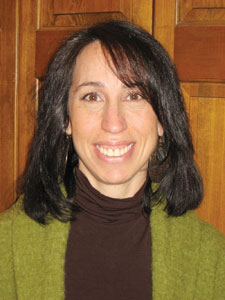 After spending the past 17 years of her career as an advocate for people living with serious health issues, Amy Goldstein recently was selected as a Sunflower Foundation Advocacy Fellow. She is one of 15 health care professionals chosen from across the state of Kansas to participate in the 2012 Fellowship program.
After spending the past 17 years of her career as an advocate for people living with serious health issues, Amy Goldstein recently was selected as a Sunflower Foundation Advocacy Fellow. She is one of 15 health care professionals chosen from across the state of Kansas to participate in the 2012 Fellowship program.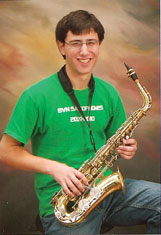 JEWS AT THE SUPER BOWL — I don’t know for sure if any of the New York Giants or the New England Patriots are Jewish, but I do know one Jewish Kansas Citian will be a starter in Super Bowl XLVI. Avi Sonnenschein, who is in his first year of studies at Indiana University, will be playing alto saxophone with the IU marching band, “The Marching Hundred” to open Super Bowl XLVI. The band was selected from among several Indiana colleges and universities for this opportunity. Avi will be just left of the 45 yard line in the opening musical set, “Rock in the USA.” Following his graduation from Blue Valley North High School in 2010, Avi spent a gap year in Israel. He is the son of Sheila and Ken Sonnenschein and a former Chronicle Salute to Youth honoree.
JEWS AT THE SUPER BOWL — I don’t know for sure if any of the New York Giants or the New England Patriots are Jewish, but I do know one Jewish Kansas Citian will be a starter in Super Bowl XLVI. Avi Sonnenschein, who is in his first year of studies at Indiana University, will be playing alto saxophone with the IU marching band, “The Marching Hundred” to open Super Bowl XLVI. The band was selected from among several Indiana colleges and universities for this opportunity. Avi will be just left of the 45 yard line in the opening musical set, “Rock in the USA.” Following his graduation from Blue Valley North High School in 2010, Avi spent a gap year in Israel. He is the son of Sheila and Ken Sonnenschein and a former Chronicle Salute to Youth honoree. JEWS PERFORMING WITH THE SYMPHONY — Several Jewish musicians will come to Kansas City to perform with Kansas City Symphony over the next year. The first is pianist Yefim Bronfman, the son of Holocaust survivors who was born in Tashkent in the former Soviet Union and immigrated to Israel when he was 14. He will be here Friday and Saturday, March 30 and 31, and Sunday, April 1. At that time the Symphony, under the direction of Michael Stern, will present the second of its world premieres this season with Daniel Kellogg’s new work celebrating our City of Fountains, and Mozart’s glorious final symphony. Bronfman returns for a work that has won him great acclaim, Bartók’s Piano Concerto No. 2. Critics have described Bronfman’s playing as “exquisite” and described “a finely spun whir of notes that verged on the unbelievable” (Los Angeles Times). Sponsors include the Sosland Foundation. For ticket information call 816-471-0400 or visit www.kcsymphony.org.
JEWS PERFORMING WITH THE SYMPHONY — Several Jewish musicians will come to Kansas City to perform with Kansas City Symphony over the next year. The first is pianist Yefim Bronfman, the son of Holocaust survivors who was born in Tashkent in the former Soviet Union and immigrated to Israel when he was 14. He will be here Friday and Saturday, March 30 and 31, and Sunday, April 1. At that time the Symphony, under the direction of Michael Stern, will present the second of its world premieres this season with Daniel Kellogg’s new work celebrating our City of Fountains, and Mozart’s glorious final symphony. Bronfman returns for a work that has won him great acclaim, Bartók’s Piano Concerto No. 2. Critics have described Bronfman’s playing as “exquisite” and described “a finely spun whir of notes that verged on the unbelievable” (Los Angeles Times). Sponsors include the Sosland Foundation. For ticket information call 816-471-0400 or visit www.kcsymphony.org.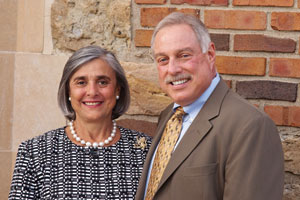 Google Todd Stettner and you won’t find much. Yes, you can find statements attributed to him as executive vice president and CEO of the Jewish Federation of Greater Kansas City. But you won’t find stories written about him. That’s because he does his job well, leading the way for others to take credit for his successes.
Google Todd Stettner and you won’t find much. Yes, you can find statements attributed to him as executive vice president and CEO of the Jewish Federation of Greater Kansas City. But you won’t find stories written about him. That’s because he does his job well, leading the way for others to take credit for his successes.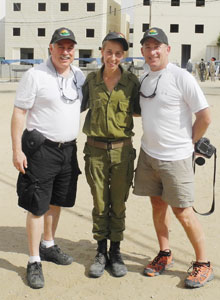 A native of The Bronx, N.Y., Stettner, who now has more than 33 years of experience in the social service field under his belt, didn’t always know he was going to spend a lifetime in the field of Jewish communal service. But he’s always liked being involved in organizations in high school and college. He served as president of his high school chapter of the National Conference of Christians and Jews and among other things was on the Intra Fraternity Council while he was an undergrad at Marrietta College in Marietta, Ohio. College was where he first really discovered his Jewishness.
A native of The Bronx, N.Y., Stettner, who now has more than 33 years of experience in the social service field under his belt, didn’t always know he was going to spend a lifetime in the field of Jewish communal service. But he’s always liked being involved in organizations in high school and college. He served as president of his high school chapter of the National Conference of Christians and Jews and among other things was on the Intra Fraternity Council while he was an undergrad at Marrietta College in Marietta, Ohio. College was where he first really discovered his Jewishness. A pioneer is a person who is among the first to settle a region. The members of Zemach family are pioneers who live in Moshav Kadesh Barnea, a small village in Israel’s Negev Desert. They moved there 10 years ago from Rehovot.
A pioneer is a person who is among the first to settle a region. The members of Zemach family are pioneers who live in Moshav Kadesh Barnea, a small village in Israel’s Negev Desert. They moved there 10 years ago from Rehovot. On the first leg of their trip in Europe, Oksana, who was born in Belarus and moved to Israel more than 20 years ago, said they met mostly non-Jewish people.
On the first leg of their trip in Europe, Oksana, who was born in Belarus and moved to Israel more than 20 years ago, said they met mostly non-Jewish people.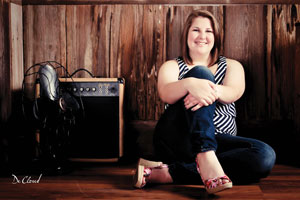 For Emily Adler, the essential part of her involvement with United Synagogue Youth is giving others a place to belong.
For Emily Adler, the essential part of her involvement with United Synagogue Youth is giving others a place to belong. PRESIDENT RABBI — Rabbi Debbie Stiel of Temple Beth Sholom in Topeka has spent the past two years serving as president of the Midwest Association of Reform Rabbis. MWARR’s membership is a little more than 100, and its president’s main responsibility is planning the Annual Kallah. The Annual Kallah is early next week and Rabbi Stiel will conclude her term at that time. MWARR’s president also speaks for the rabbis in the region with the Central Conference of American Rabbis when the need arises. The meeting is in Phoenix, which is not a part of the region but, as Rabbi Stiel says, is a great place to go this time of year for Midwestern rabbis. “This conference is a wonderful way for us as rabbis to let our hair down and enjoy some time together and study. It’s been great for me to go to for years and this was my opportunity to give back by putting it together.
PRESIDENT RABBI — Rabbi Debbie Stiel of Temple Beth Sholom in Topeka has spent the past two years serving as president of the Midwest Association of Reform Rabbis. MWARR’s membership is a little more than 100, and its president’s main responsibility is planning the Annual Kallah. The Annual Kallah is early next week and Rabbi Stiel will conclude her term at that time. MWARR’s president also speaks for the rabbis in the region with the Central Conference of American Rabbis when the need arises. The meeting is in Phoenix, which is not a part of the region but, as Rabbi Stiel says, is a great place to go this time of year for Midwestern rabbis. “This conference is a wonderful way for us as rabbis to let our hair down and enjoy some time together and study. It’s been great for me to go to for years and this was my opportunity to give back by putting it together.
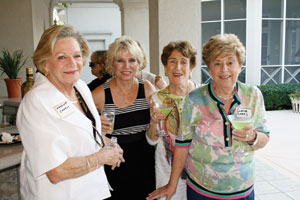 When most people hit “retirement age,” they retire. Eileen Garry didn’t take that route. Instead she began working for what was then known as the Museum Without Walls. Almost exactly 20 years later, Garry quietly retired as executive director of The Kansas City Jewish Museum of Contemporary Art late last year.
When most people hit “retirement age,” they retire. Eileen Garry didn’t take that route. Instead she began working for what was then known as the Museum Without Walls. Almost exactly 20 years later, Garry quietly retired as executive director of The Kansas City Jewish Museum of Contemporary Art late last year.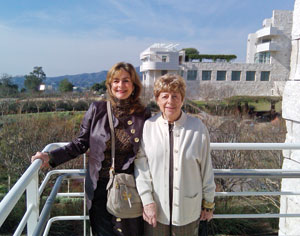 Garry’s involvement with the Museum Without Walls came at the invitation of Sybil Kahn in 1992. Kahn and her late husband, Norman, founded the organization.
Garry’s involvement with the Museum Without Walls came at the invitation of Sybil Kahn in 1992. Kahn and her late husband, Norman, founded the organization.